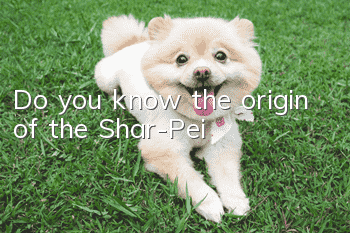Do you know the origin of the Shar-Pei?

The name Shar-Pei comes from the puppy's peculiar appearance. It has a head like a hippopotamus and a mouth like a tile tube. It has wrinkles all over its body. It is 46-56 cm tall and weighs 22-27 kg. It is square in shape. He looked so naive that anyone who saw him was impressed. However, today the Youpet editor mainly introduces to you the origin of the Shar-Pei dog.
The Shar-Pei breed originated in the central and southern region of the Han Dynasty more than 2,000 years ago and was used as a police dog and shepherd dog. There was a time when the Shar-Pei was almost extinct. However, in the early 1970s, Matgo-Law, a dog breeder from Hong Kong, donated a batch of Shar-Pei dogs to the United States. After that, the Shar-Pei breed began to be re-bred and was regarded as the rarest breed in the world. In the early 1990s, the Shar-Pei became an extremely popular breed in Europe and the United States. After breeding, the unique wrinkles of the first Shar-Peis deepened further, and the wrinkles of their descendants appear to have become thicker and more numerous. Increased thickness and wrinkles are the cause of mucinosis, a process in which large amounts of mucin are formed in the mucus layer of the skin.
In terms of breeding, the Shar-Pei was originally a hunting and fighting dog. It loves to be active, so it should be given sufficient time for walking, running and other activities every day.
However, some pet editors remind pet owners that it is impossible for Shar-Pei dogs to be overactive, because the dog's canine nasal passages are relatively short, so it is easy to suffer from hypoxia after strenuous exercise. In addition, during the rainy season, when the air is humid, the dog should be moved to a clean and dry environment, and the dog's skin should be dried in time after taking a bath.
- Benefits of dogs chewing bones
- Training dogs to be obedient
- How to stop a dog from chasing people
- Is positive dog training useful? It’s important to use the right method to train your dog!
- What should I do if my dog has diarrhea and vomiting?
- Medical treatment for pet dogs is more expensive than for people. Many people don’t want to believe it.
- What should I do if my dog likes to lick people? How to train a dog not to lick people?
- Why do dogs love to eat poop? How to stop your dog from eating poop?
- Why are dogs not vaccinated according to weight?
- Evaluation of ten pet disinfectants, understand them before you know how to choose!



